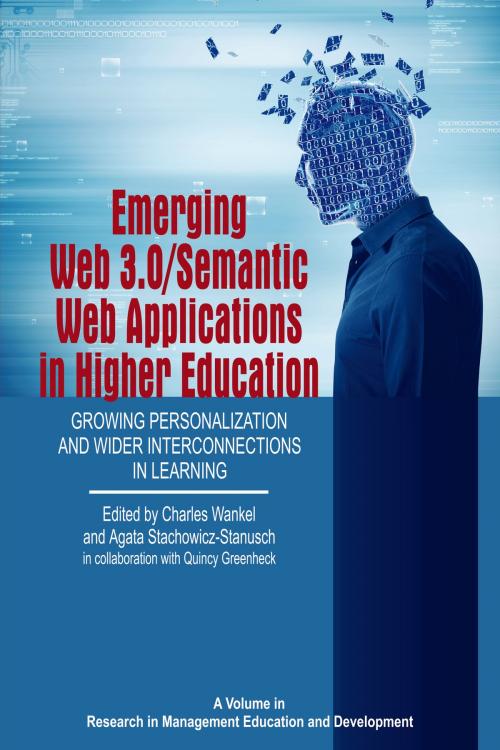Emerging Web 3.0/Semantic Web Applications in Higher Education
Growing Personalization and Wider Interconnections in Learning
Nonfiction, Reference & Language, Education & Teaching, Educational Theory, Leadership, Business & Finance, Management & Leadership, Management| Author: | ISBN: | 9781681231488 | |
| Publisher: | Information Age Publishing | Publication: | September 1, 2015 |
| Imprint: | Information Age Publishing | Language: | English |
| Author: | |
| ISBN: | 9781681231488 |
| Publisher: | Information Age Publishing |
| Publication: | September 1, 2015 |
| Imprint: | Information Age Publishing |
| Language: | English |
The Web is evolving from a place where a prodigious amount of text and images are stored to a place where educational and other needs are serviced. The Web is becoming increasingly automated with functions that previously required human action undertaken automatically moving learners and other users more quickly to useful support. More and more such services interoperate with each other through computer programs and agents. This is the territory of semantic Web services and Web 3.0. Just as shop bots and auction bots abound in handling a particular task on the Web currently, in higher education of the future such related bots and agents will interact with the heterogeneous information that is the stuff of higher education. The scale of such agentbased mediation and linked data will grow over time. Increasingly, intelligent agents and bots will undertake tasks on behalf of their faculty, administrator, and student owners. Collaborations among faculty and students around the world will be increasingly supported by semantic social networks capable of providing crucial functions. Students can be engaged in participating in the design and development of semantic Web applications in such areas as structuring and representing knowledge. The increasing availability of interactive educational tools and collaborative communityresources, such as wikis, can be the foundation for deploying semantically markedup and socialconnected educational spaces where students construct their own learning pathways in explorations of knowledge and creating new content integration. This volume will share visions and partial realizations of the impact of the semantic Web and associated Web 3.0 features on higher education. This volume will provide accounts of cuttingedge pedagogic applications of the semantic Web with its extremely extensive use of interconnecting information technologies.
The Web is evolving from a place where a prodigious amount of text and images are stored to a place where educational and other needs are serviced. The Web is becoming increasingly automated with functions that previously required human action undertaken automatically moving learners and other users more quickly to useful support. More and more such services interoperate with each other through computer programs and agents. This is the territory of semantic Web services and Web 3.0. Just as shop bots and auction bots abound in handling a particular task on the Web currently, in higher education of the future such related bots and agents will interact with the heterogeneous information that is the stuff of higher education. The scale of such agentbased mediation and linked data will grow over time. Increasingly, intelligent agents and bots will undertake tasks on behalf of their faculty, administrator, and student owners. Collaborations among faculty and students around the world will be increasingly supported by semantic social networks capable of providing crucial functions. Students can be engaged in participating in the design and development of semantic Web applications in such areas as structuring and representing knowledge. The increasing availability of interactive educational tools and collaborative communityresources, such as wikis, can be the foundation for deploying semantically markedup and socialconnected educational spaces where students construct their own learning pathways in explorations of knowledge and creating new content integration. This volume will share visions and partial realizations of the impact of the semantic Web and associated Web 3.0 features on higher education. This volume will provide accounts of cuttingedge pedagogic applications of the semantic Web with its extremely extensive use of interconnecting information technologies.















